Parsnips need to get more love, they always seem to hide in the background.
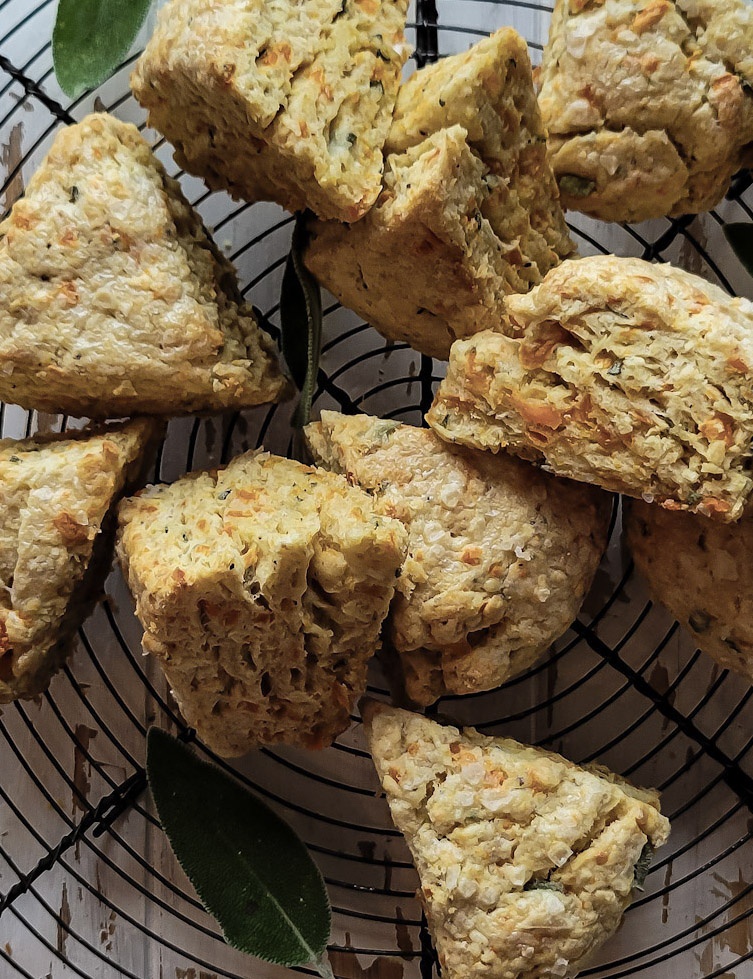 They may look like carrots who are badly in need of a beach vacation, but they have so much more to offer.
They may look like carrots who are badly in need of a beach vacation, but they have so much more to offer.
Ode to the Parsnip
I learned a lot about the parsnip from Renée Kohlman’s new book, “Vegetables: A Love Story”. It wasn’t a vegetable we grew up with, I don’t think they were on my mother’s radar, must not be a German veggie. But through the years I have learned to love the delicate, earthy sweetness (as opposed to the more blatant sweetness of carrots) and even use it in sweet bakes (see my Parnsip Cake with Vanilla Powder Frosting)
Renée reminds us that parsnips are low in calories, and rich in nutrients like potassium, manganese, magnesium, zinc, iron, folate and phosphorus, as well as B, C, E and K vitamins. They have anti-inflammatory properties and can help with lowering blood sugar and cholesterol. Because they are one of the last veggies to harvest late October/November to be stored over the winter, the sugars that the cold traps in them turns their flavour more intensely sweet. They can be fried, broiled, roasted, or scalloped: think of them as a great substitute for potatoes! Bacon and sautéed leafy greens both pair well with parsnips.
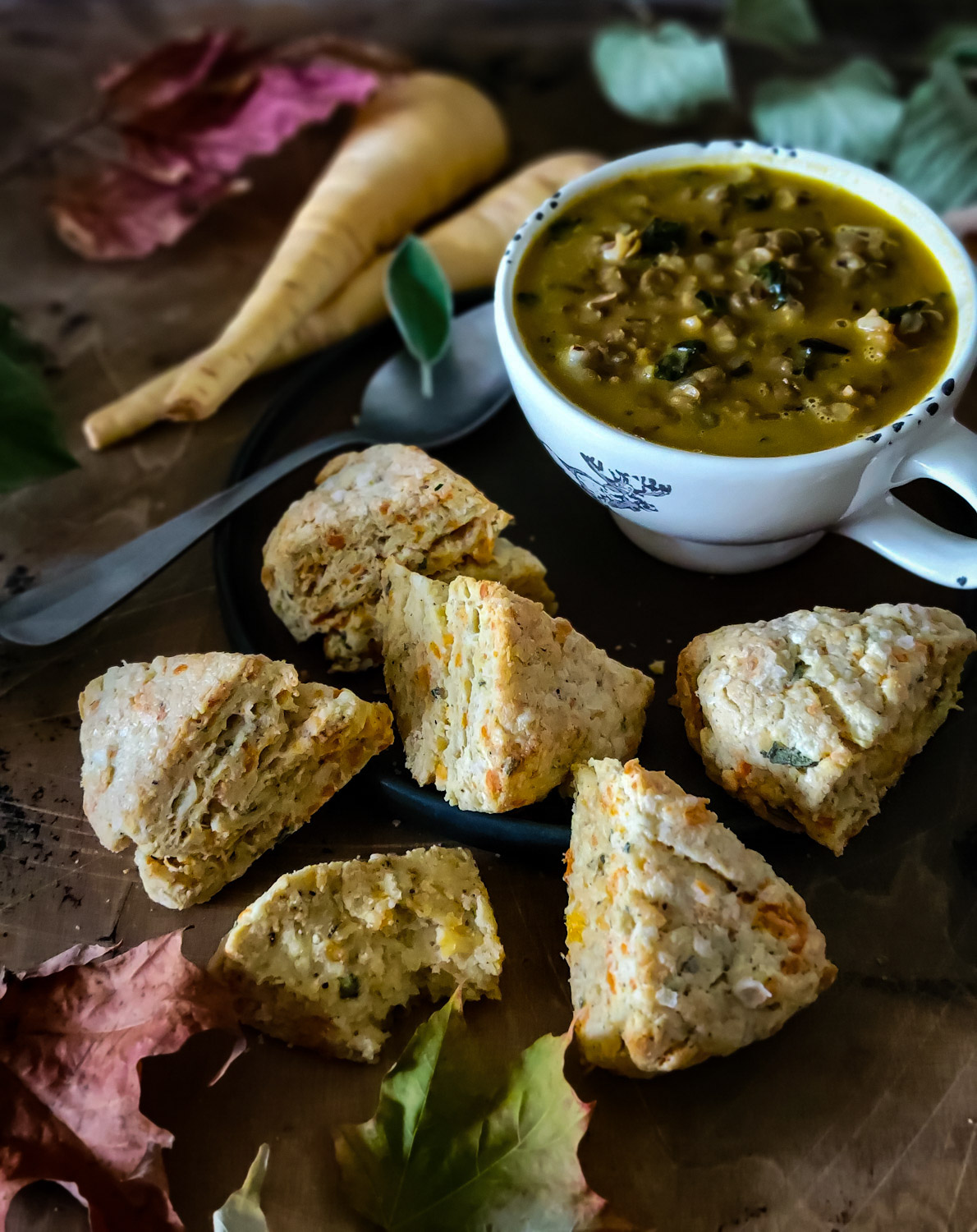
Parsnip Scones
In Renée’s book she offers some fun quirky ways to serve up parsnip, including waffles, a roasted root veg pot pie, a cheesy and bacony gratin with a crunchy parm and breadcrumb topping, and the scones that I am sharing with you today.
These are delightful flakey, buttery savoury scones with a slight but not overpowering sweetness to them. The grated parsnip and cheddar cheese hang out with chopped fresh sage, and the tender dough bakes up perfectly. These are a great savory breakfast scone served on the side of scrambled eggs, or even split open and filled with ham and tomato. But I will also show you an option, to make them more of a little nibble.
Slight Adjustments
I did have to tweak it, so that I could eat them. Renée uses AP as well as whole wheat flours. I substituted Cup4Cup gluten free blend by Thomas Keller. The classic blend for the AP flour, and the wholesome (wholemeal) for the whole wheat. Couldn’t have turned out better.
Beyond just forming the ball of dough and then rolling it out in order to cut out the scones, I first do a few folds. Folding the dough in thirds (like folding paper to put into an envelope) rolling, and repeating, gives the dough added flakey opportunities and the layers really reveal themselves in the oven. Cream or melted butter are brushed on the scones and coarse salt is sprinkled on top before they get popped into the oven. In no time they are puffed up and ready to be served. I think this is why I love baking scones, there is no down time, while waiting for dough to proof etc.
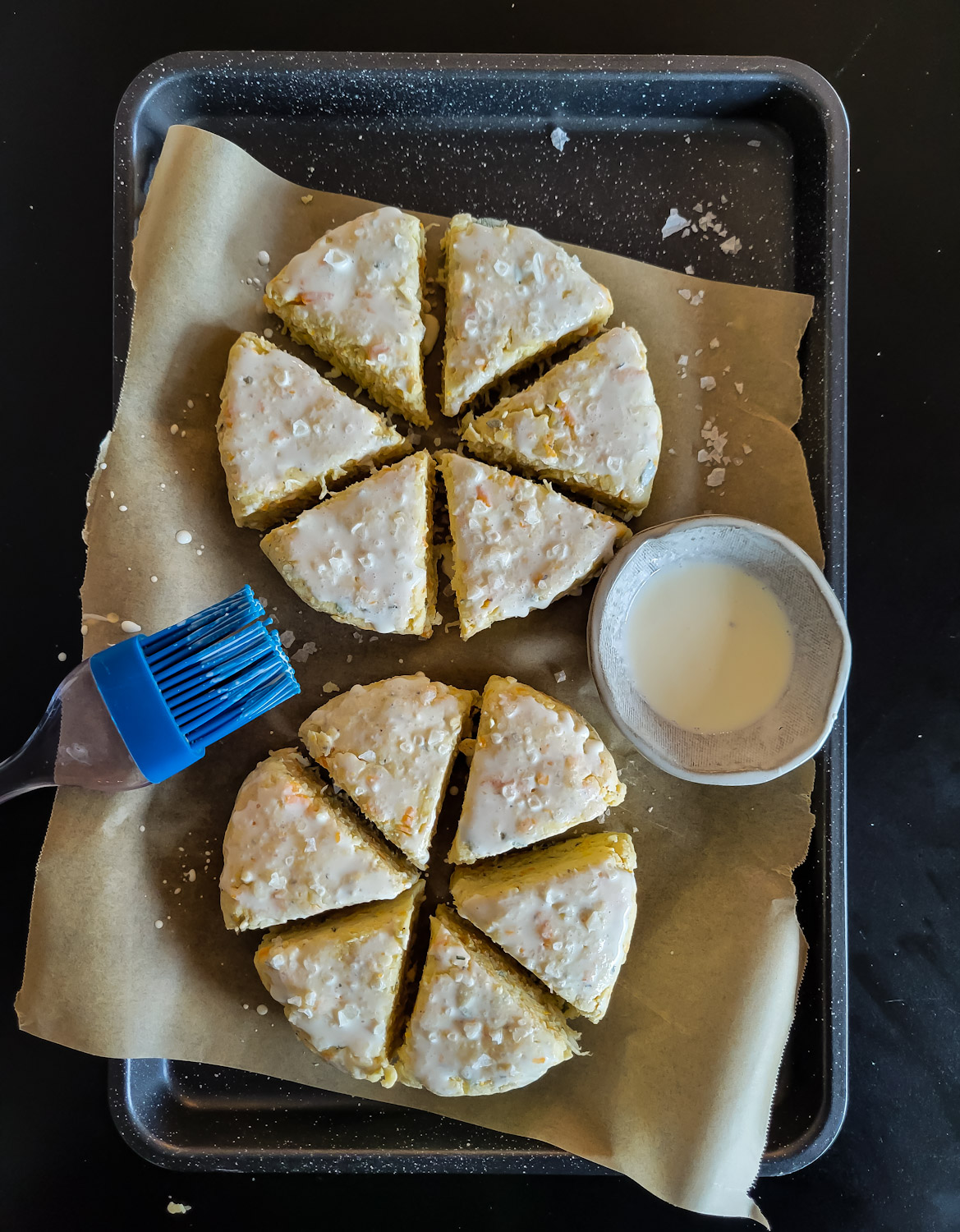
The third thing I did, was to create two balls out of the folded pastry. Each of these was formed into a round about 5-6 inches in diameter, with an inch thickness. These I cut each into 6 little triangles. Instead of the 8 scones that the recipe gives, I now have 12 smaller scones that are perfect to serve at lunch or dinner. Place fresh out of the oven mini scones into a tea towel lined basket, and watch these get gobbled up as a great side to soup, or as an alternative to bread rolls. Do not feel obligated to follow my example. I will write out Renée’s recipe as it is in the book and I will leave it up to you to decide how to proceed.
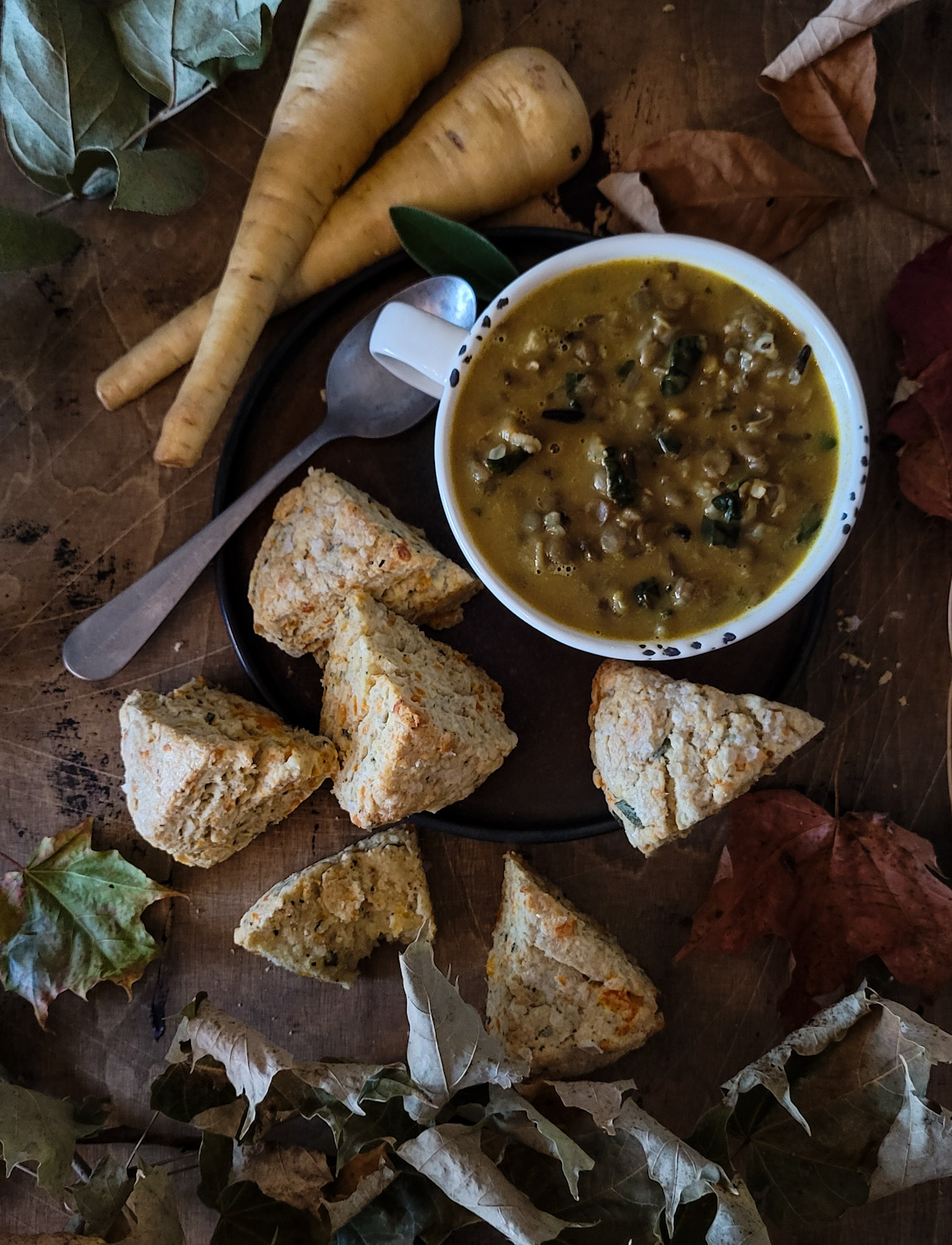
Final Thoughts
While scones are at their best the day they are baked, you can store them in a sealed container and reheat in a toaster oven at 325 for 6-8 minutes (or longer if they are larger) and they will be all flakey again. Just don’t use a microwave. And you can also freeze the ones you won’t eat right away. Just thaw and reheat as I just described.
If you would like to add a beautiful reference book that is a love letter to all things vegetable, I highly encourage you to pick up Renée’s book linked here at: Vegetables: A Love Story. Like her first book, All The Sweet Things, her recipes are a joy to use. They are written with a whimsical voice, but are easy to follow and use ingredients that we can all source easily. Renée’s writing style is joyful, and is like sitting with her at the kitchen table with a cup of tea. This new book is truly a love story, not only for vegetables, but also a lovely tribute to her mom, as well as the love of her life, Dix, the farmer who showed up for their first date with an asparagus bouquet for her. The rest is history. Now we have a book chock full of all sorts of fun and fresh ways to bake, cook, roast and serve up all the vegetables throughout the season.
As I mentioned earlier, if you do create smaller scones, they are a perfect little roll to serve with a roast turkey dinner, or even a pork loin roast. Just have some butter nearby to slather on them! Or if you would like to have a little savoury nibble to serve with prosecco as a first course or appetizer before heading over to the dining table, these would totally fit the bill.
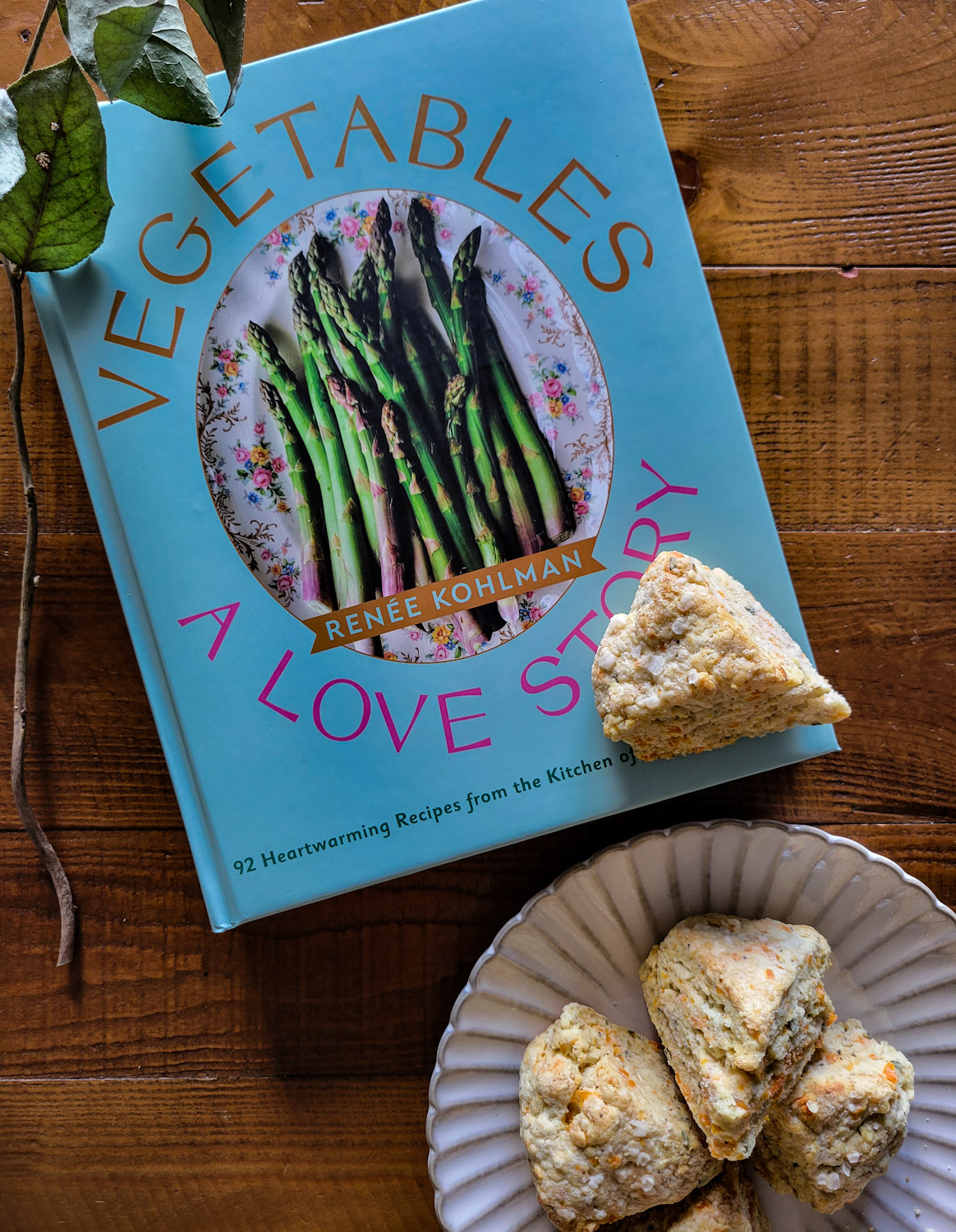
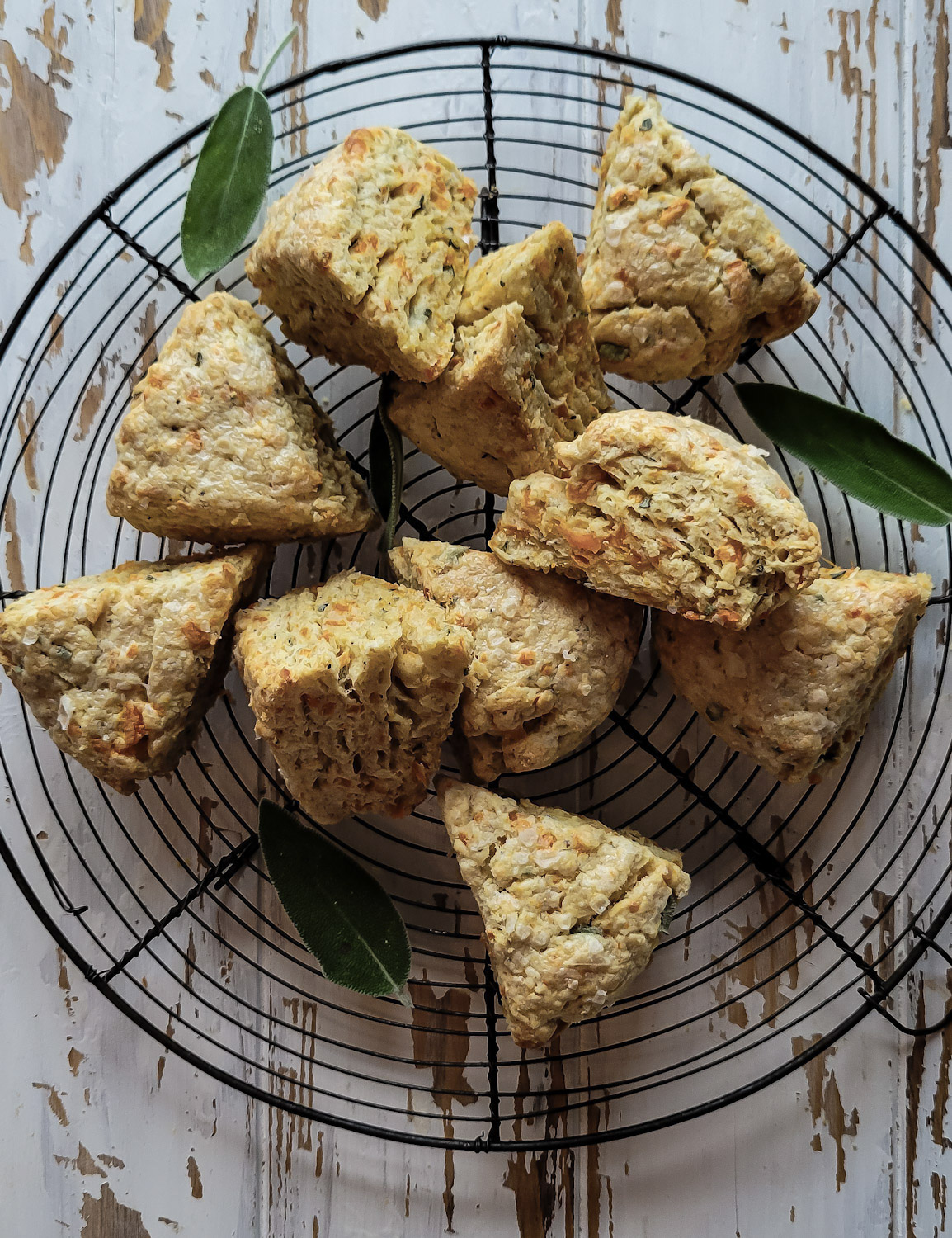

Parsnip and Cheddar Scones
These tender, flakey delightful scones celebrate the unassuming parsnip in the best way. Their hint of earthy sweetness is balanced with the cheddar cheese and fresh chopped sage. Perfect as a morning nibble with eggs, or a side to warm soup, or even as an alternative to dinner rolls. Just slather with butter!
Ingredients
- 1 1/2 cups AP flour, can substitute with cup for cup gluten free flour blend
- 1/2 cup whole wheat or spelt flour, can substitute with a wholemeal cup for cup gluten free blend
- 1 tbsp baking powder
- 1/2 tsp baking soda
- 1/2 tsp dry mustard
- 1/2 tsp salt
- 1/4 tsp pepper
- 1/2 cup cold butter
- 1/2 cup shredded extra old cheddar cheese
- 1 large egg
- 1/2 cup sour cream or sour milk or buttermilk
- 1 1/2 cups peeled shredded parsnips, I shred on the smaller holes of my box grater, to get a finer shred which will bake up better
- 2 Tbsp chopped fresh sage leaves
- 1 Tbsp melted butter or cream I use cream
- flakey salt for finishing
Instructions
-
Preheat the oven to 375F. Line a baking sheet with parchment paper.
-
Stir together the dry ingredients (flours through salt and pepper) in a medium bowl. Use the large holes of a box grater to grate the butter into the dry ingredients. Use your fingers to blend and create small pea size pieces of flour and butter mixture. Toss in the cheese and blend in.
-
Whisk together the egg and sour cream in a small bowl. Add this to the mixture in the medium bowl and stir through a few times. Add the grated parsnip and sage. Use your hands to bring it all together.
-
Dump the mixture onto a lightly floured surface. Knead it all together a few times to blend. Spread out into a rough rectangle. Fold in half. Use your palms or a rolling pin to pound down the dough and form into a rectangle again. Fold again. Repeat once more.
-
Shape the dough into a circle about 1 inch thick. Use a sharp knife to create eight equal triangles. Place these onto the prepared baking sheet. Brush the tops with melted butter and sprinkle with the flakey salt. (see Notes for alternate shaping)
-
Bake the scones for 25-30 minutes, rotating the pan 180 degrees halfway through the baking. The scones are done when they are flakey, puffed up and golden brown.
-
Best served fresh and warm. However, store the uneaten ones in a sealed container and re-warm in a toaster oven or oven at 325F for about 6-8 minutes till warmed through. Don't use a microwave, or the flakes and crispy edges will be lost.
-
To store in the freezer, place the scones on a baking sheet lined with wax paper and place in the freezer. Once frozen, transfer them to a freezer bag. Now it will be easy to remove one or two without them sticking to the others. Thaw and re-heat as described above.
Recipe Notes
To make 12 or even 16 smaller scones:
Divide the folded dough into two sections. Form each of these into a circle about 3/4 to 1 inch thick. Cut each circle into 6 or 8 triangles. Place all of them onto the prepared baking sheet and bake till baked through, decreasing the baking time by about 5 minutes. Check and bake till golden and flakey.
Recipe adapted from Vegetables: A Love Story by Renée Kohlman
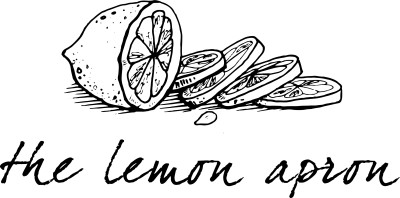
Do you think I could use gluten free oat flour for the 1/2 cup whole meal or spelt flour?
Thanks- can’t wait to try these
Hi Susan, good question. Remember, oat flour is just ground oats. It has no gluten or binding properties. I would hesitate saying you can do a one to one switch. You can if you add extra xanthan gum that would have been found in the whole meal gf blend. If you really want to use it, use half of the required amount, and increase the all purpose gf blend to compensate. Oat flour also absorbs liquids differently, and creates more moist batters. So you may need to add a spoonful or so more. If the dough is sticky adjust accordingly. Let me know how it goes. Love Jen